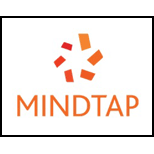
a.
Explanation of Solution
Program:
File name: “CollegeCourse.java”
//Define a class named CollegeCourse
public class CollegeCourse
{
//Declare the private variables
private String courseID;
private int credits;
private char grade;
//Define a get method that returns the course ID
public String getID()
{
//Return the value
return courseID;
}
//Define a get method that returns the credit hours
public int getCredits()
{
//Return the value
return credits;
}
//Define a get method that returns the letter grade
public char getGrade()
{
//Return the value
return grade;
}
//Define a set method that takes the course ID
public void setID(String idNum)
{
//Assign the value
courseID = idNum;
}
//Define a set method that takes the credit hours
public void setCredits(int cr)
{
//Assign the value
credits = cr;
}
//Define a set method that takes the letter grade
public void setGrade(char gr)
{
//Assign the value
grade = gr;
}
}
File name: “Student...
b.
Explanation of Solution
Program:
File name: “InputGrades.java”
//Import necessary header files
import college.CollegeCourse;
import college.Student;
import javax.swing.*;
//Define a class named InputGrades
public class InputGrades
{
//Define a main method
public static void main(String[] args)
{
//Declare an array to store data of 10 students
Student[] students = new Student[10];
//Declare the variables and initialize the values
int x, y, z;
String courseEntry, entry = "", message;
int idEntry, credits;
char gradeEntry = ' ';
boolean isGoodGrade = false;
final int NUM_COURSES = 5;
//Declare an array to store five grades
char[] grades = {'A', 'B', 'C', 'D', 'F'};
//For loop to be executed until x exceeds 10
for(x = 0; x < students.length; ++x)
{
//Create a student object
Student stu = new Student();
//Prompt the user to enter the student ID
entry = JOptionPane.showInputDialog(null, "For student #" +
(x + 1) + ", enter the student ID");
idEntry = Integer.parseInt(entry);
//Function call
stu.setID(idEntry);
//For loop to be executed until y exceeds 5
for(y = 0; y < NUM_COURSES; ++y)
{
//Prompt the user to enter the course
courseEntry = JOptionPane.showInputDialog(null,
"For student #" + (x + 1) + ", enter course #" +
(y + 1));
//Prompt the user to enter the credits for each //course
entry = JOptionPane.showInputDialog(null,
"For student #" + (x + 1) +
", enter credits for course #" + (y + 1));
credits = Integer.parseInt(entry);
//Assign the value false to isGoodGrade
isGoodGrade = false;
//While the user does not enter isGoodGrade
while(!isGoodGrade)
{
//Prompt the user to enter the grade for //course
entry = JOptionPane.showInputDialog(null,
"For student #" + (x + 1) +
", enter grade for course #" + (y + 1));
gradeEntry = entry...
Trending nowThis is a popular solution!

Chapter 8 Solutions
Mindtap Programming, 1 Term (6 Months) Printed Access Card For Farrell's Java Programming, 9th
- 2:21 m Ο 21% AlmaNet WE ARE HIRING Experienced Freshers Salesforce Platform Developer APPLY NOW SEND YOUR CV: Email: hr.almanet@gmail.com Contact: +91 6264643660 Visit: www.almanet.in Locations: India, USA, UK, Vietnam (Remote & Hybrid Options Available)arrow_forwardProvide a detailed explanation of the architecture on the diagramarrow_forwardhello please explain the architecture in the diagram below. thanks youarrow_forward
- Complete the JavaScript function addPixels () to calculate the sum of pixelAmount and the given element's cssProperty value, and return the new "px" value. Ex: If helloElem's width is 150px, then calling addPixels (hello Elem, "width", 50) should return 150px + 50px = "200px". SHOW EXPECTED HTML JavaScript 1 function addPixels (element, cssProperty, pixelAmount) { 2 3 /* Your solution goes here *1 4 } 5 6 const helloElem = document.querySelector("# helloMessage"); 7 const newVal = addPixels (helloElem, "width", 50); 8 helloElem.style.setProperty("width", newVal); [arrow_forwardSolve in MATLABarrow_forwardHello please look at the attached picture. I need an detailed explanation of the architecturearrow_forward
- Information Security Risk and Vulnerability Assessment 1- Which TCP/IP protocol is used to convert the IP address to the Mac address? Explain 2-What popular switch feature allows you to create communication boundaries between systems connected to the switch3- what types of vulnerability directly related to the programmer of the software?4- Who ensures the entity implements appropriate security controls to protect an asset? Please do not use AI and add refrencearrow_forwardFind the voltage V0 across the 4K resistor using the mesh method or nodal analysis. Note: I have already simulated it and the value it should give is -1.714Varrow_forwardResolver por superposicionarrow_forward
- Describe three (3) Multiplexing techniques common for fiber optic linksarrow_forwardCould you help me to know features of the following concepts: - commercial CA - memory integrity - WMI filterarrow_forwardBriefly describe the issues involved in using ATM technology in Local Area Networksarrow_forward
 EBK JAVA PROGRAMMINGComputer ScienceISBN:9781337671385Author:FARRELLPublisher:CENGAGE LEARNING - CONSIGNMENTProgramming Logic & Design ComprehensiveComputer ScienceISBN:9781337669405Author:FARRELLPublisher:Cengage
EBK JAVA PROGRAMMINGComputer ScienceISBN:9781337671385Author:FARRELLPublisher:CENGAGE LEARNING - CONSIGNMENTProgramming Logic & Design ComprehensiveComputer ScienceISBN:9781337669405Author:FARRELLPublisher:Cengage Microsoft Visual C#Computer ScienceISBN:9781337102100Author:Joyce, Farrell.Publisher:Cengage Learning,
Microsoft Visual C#Computer ScienceISBN:9781337102100Author:Joyce, Farrell.Publisher:Cengage Learning, Programming with Microsoft Visual Basic 2017Computer ScienceISBN:9781337102124Author:Diane ZakPublisher:Cengage Learning
Programming with Microsoft Visual Basic 2017Computer ScienceISBN:9781337102124Author:Diane ZakPublisher:Cengage Learning EBK JAVA PROGRAMMINGComputer ScienceISBN:9781305480537Author:FARRELLPublisher:CENGAGE LEARNING - CONSIGNMENT
EBK JAVA PROGRAMMINGComputer ScienceISBN:9781305480537Author:FARRELLPublisher:CENGAGE LEARNING - CONSIGNMENT




